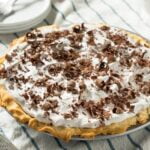Decorating a cake is a labor of love that requires time, effort, and creativity. Whether it’s for a special occasion or just a way to showcase your baking skills, the last thing you want is for all your hard work to go to waste. That’s why properly storing a decorated cake is crucial. In this article, we will explore various techniques and tips on how to store a decorated cake to ensure its longevity and freshness.
When it comes to storing a decorated cake, understanding the importance of proper storage is key. Without the right conditions, your beautifully decorated creation can quickly deteriorate, losing its flavor and overall appeal. That’s why knowing how to store cake after decorating is essential for any baker. Whether you’re using buttercream frosting, fondant, or ganache, each type of frosting has specific storage requirements that must be followed.
To make sure your cake remains in pristine condition after decorating, it’s important to know how to prepare it for storage effectively. This often involves removing any decorative elements that may not withstand prolonged storage well or could alter the texture and taste of the cake over time. By taking these steps before wrapping and packaging your cake, you are setting yourself up for success when it comes to preserving freshness and moisture.
In the following sections of this article, we will delve into best practices for wrapping and packaging your cake after decorating. We will also discuss the benefits of utilizing refrigeration when necessary as well as provide a step-by-step guide on freezing a cake for long-term storage.
Additionally, we’ll highlight proper thawing techniques so that when you’re ready to enjoy your frozen masterpiece, it can be returned back to its original glory without sacrificing taste or appearance.
Properly storing a decorated cake doesn’t have to be daunting or complicated. By following the tips and tricks discussed in this article, you can keep your hard work looking fresh and delicious for longer periods. So, let’s dive in and uncover the secrets to ensuring that your cake endures with proper storage techniques.
Understanding the Different Types of Cake Frosting and their Storage Requirements
When it comes to storing a decorated cake, it is important to understand the different types of cake frostings and their storage requirements. Different types of frosting have different consistencies and ingredients, which can affect how they should be stored.
- Buttercream Frosting: Buttercream frosting is a popular choice for decorating cakes due to its smooth and creamy texture. It is made with butter, powdered sugar, and flavorings such as vanilla extract. Buttercream frosting should be stored at room temperature in an airtight container or wrapped tightly with plastic wrap. It can last for up to 2 days at room temperature before it starts to lose its freshness.
- Cream Cheese Frosting: Cream cheese frosting adds a tangy and rich flavor to cakes. It is made with cream cheese, butter, powdered sugar, and vanilla extract. Cream cheese frosting should be refrigerated in an airtight container due to its perishable nature. It can last for up to 5 days in the refrigerator.
- Fondant: Fondant is a smooth icing that gives cakes a polished and professional look. It is made from sugar, water, gelatin, and glycerin. Fondant-covered cakes should be stored at room temperature in a cool and dry place away from direct sunlight or heat sources. To prevent the fondant from drying out, cover the cake with plastic wrap or place it in a cake box.
It is important to consider the type of frosting used when deciding how to properly store a decorated cake. By understanding the storage requirements for each type of frosting, you can ensure that your cake stays fresh and delicious for as long as possible.
Preparing the Cake for Storage
When it comes to storing a decorated cake, it is essential to properly prepare the cake before packaging and storing it. One crucial step in this process is removing any decorative elements from the cake. These may include fondant decorations, edible flowers, or delicate sugar work that could be damaged during storage. By taking the time to remove these elements carefully, you can ensure that your cake stays intact and looks as beautiful when it’s time to enjoy it.
Handling Fondant Decorations
If your cake features fondant decorations, it is essential to handle them with care when removing them. Begin by gently peeling off any large pieces of fondant from the cake. Use a small offset spatula or a butter knife for more intricate details. Take your time and be patient to prevent damaging the underlying frosting or cake layers.
Removing Edible Flowers
If you have adorned your cake with fresh edible flowers, you’ll want to remove them before storing. Gently pluck each flower from the cake, being mindful not to disturb the frosting underneath. Inspect each flower for any dirt or debris and use a soft brush or damp paper towel to clean them if necessary. This will help maintain the beauty of both the flowers and the cake.
Safely Handling Sugar Work
For cakes embellished with delicate sugar work such as figures or bows, extra care must be taken while removing them. Use a small spatula or toothpick to gently lift off any sugar decorations from the surface of the cake. If they are particularly fragile, consider using tweezers for precise handling. Place each piece on a soft surface like tissue paper or bubble wrap for added protection during storage.
By following these steps and removing any decorative elements with caution and precision, you can ensure that your carefully designed cake remains intact during storage. Taking the time to handle each element delicately will prevent any unnecessary damage and allow you to showcase your cake’s beauty when it is time to serve and enjoy.
Wrapping and Packaging the Cake
Choosing the Right Materials
When it comes to wrapping and packaging a decorated cake, it is crucial to choose the right materials that will help preserve its freshness and moisture. The most commonly used materials for wrapping cakes are plastic wrap, aluminum foil, and cake boxes.
Plastic wrap is an ideal option for short-term storage or if you need to transport the cake. It helps create a barrier against air and moisture, keeping the cake moist and preventing it from drying out. Make sure to tightly seal the plastic wrap around the entire cake to ensure maximum freshness.
Aluminum foil is another popular choice for wrapping cakes. It provides a protective layer that helps maintain the moisture level in the cake while keeping it safe from external elements. To wrap a cake with aluminum foil, first, place it on a sturdy cardboard base or a plate, then cover the entire cake with a double layer of foil, ensuring there are no gaps or openings.
If you need long-term storage or want additional protection for your decorated cake, using a cake box is recommended. Cake boxes come in various sizes and are designed specifically for storing cakes. They often include inserts to keep the cake stable during transportation. To use a cake box, carefully place your wrapped cake inside, making sure it fits snugly and won’t move around during transportation.
Storing Decorative Elements Separately
Before wrapping and packaging your decorated cake, it is essential to remove any decorative elements that may not fare well during storage. This includes fragile decorations such as sugar flowers or delicate figurines made of fondant or chocolate.
Gently remove these decorations from the top of your cake using clean hands or small tools like tweezers or toothpicks. Place them separately in an airtight container or wrap them individually in plastic wrap to prevent damage during storage.
By removing these fragile decorative elements before wrapping the main part of your decorated cake, you can ensure that they will remain intact and ready to be placed back on the cake when it is time to serve or present it.
Properly Securing the Wrapped Cake
After wrapping your decorated cake and removing any delicate decorations, it is essential to secure the wrapping properly to prevent it from coming undone or getting damaged during transportation or storage. To do this, you can use additional materials such as ribbons or rubber bands.
If you choose to use plastic wrap, make sure to tightly seal the ends by twisting them together and securing them with a rubber band. This will help keep the plastic wrap in place and maintain its freshness.
For cakes wrapped in aluminum foil, you can tie a ribbon around the foil to hold it securely in place. This not only adds an aesthetic touch but also ensures that the foil remains intact and protects the cake effectively.
By taking these steps and putting some effort into packaging your decorated cake properly, you can significantly increase its shelf life while maintaining its freshness and moisture. Properly wrapped cakes are less likely to get damaged during transportation or storage, allowing your hard work and artistry to endure until it’s time for everyone to enjoy your masterpiece.
Utilizing Refrigeration
Refrigerating a decorated cake can be a useful method for prolonging its freshness and preserving its appearance. However, it is important to know when and how to refrigerate a cake properly to ensure the best results.
Firstly, it is important to understand that not all cakes are suitable for refrigeration. Cakes with certain types of frosting or fillings, such as cream cheese or whipped cream, may not hold up well in the refrigerator and could become soggy or lose their texture. On the other hand, cakes with buttercream or ganache frostings typically do well in the refrigerator.
To determine if your cake should be refrigerated, consider factors such as the type of frosting used and the ingredients in any fillings. It is also important to note that some decorative elements, such as fresh fruits or flowers, may not fare well in cold temperatures and should be removed before refrigeration.
When it comes to actually refrigerating a decorated cake, there are a few key steps to follow. First, ensure that the cake has cooled completely before placing it in the refrigerator to prevent condensation from forming on the surface. Next, carefully cover the cake with plastic wrap or place it in an airtight container to protect it from absorbing odors from other foods in the fridge.
In addition to refrigeration, it is important to note that time plays a role in cake storage. While some cakes can safely be kept at room temperature for a short period of time, others will need to be refrigerated sooner. It is generally recommended to refrigerate most decorated cakes within 2-3 days of baking or decorating.
Overall, utilizing proper refrigeration techniques can help extend the lifespan of your decorated cake and keep it looking fresh for longer periods. By understanding which types of cakes are suitable for refrigeration and following best practices for storing and packaging your cake in the fridge, you can ensure that your hard work and artistry will endure.
Freezing the Cake
Freezing a decorated cake is an excellent option for long-term storage, especially if you want to enjoy it at a later date or preserve it for a special occasion. Freezing not only extends the shelf life of your cake but also helps maintain its flavor and texture. Follow this step-by-step guide to properly freeze your decorated cake:
- Cool the Cake: Before freezing, make sure that your cake has completely cooled down. This helps prevent any condensation from forming inside the packaging, which can result in a soggy cake.
- Wrap in Plastic Wrap: Start by wrapping the entire cake tightly with multiple layers of plastic wrap. Ensure that there are no visible gaps or openings where air can enter, as this can lead to freezer burn.
- Double up with Aluminum Foil: Once wrapped in plastic wrap, add an extra layer of protection by covering the cake with aluminum foil. This adds another barrier against moisture and freezer odors.
- Place in a Freezer-Safe Container: If possible, transfer the wrapped cake into a sturdy container that is specifically designed for freezer use. Alternatively, you can place it in a heavy-duty resealable plastic bag.
- Label and Date: Write the date of freezing on the container or bag so that you know how long it has been stored. Additionally, labeling helps you easily identify the type of cake if you have multiple frozen cakes.
- Freeze Properly: Put the wrapped and packaged cake in the coldest part of your freezer and ensure it is not placed near other strong-smelling foods that may impart unwanted flavors onto the cake.
- Storage Duration: A properly frozen and packaged decorated cake can be stored for up to three months without significant loss in quality.
- Thawing Process: When you’re ready to enjoy your frozen cake, remove it from the freezer and let it thaw at room temperature inside its wrapper until completely defrosted. This usually takes a few hours to overnight, depending on the size of the cake.
| Cake Type | Date Frozen | Storage Duration |
|---|---|---|
| Birthday Cake | June 1, 2022 | 3 months |
| Anniversary Cake | May 15, 2022 | 2.5 months |
By following these steps and properly labeling your frozen cakes, you can ensure that they maintain their taste, texture, and appearance when it’s time to indulge in those delicious treats.
Proper Thawing Techniques
Thawing a frozen cake properly is essential to ensure that it retains its original taste, texture, and appearance. Improper thawing can result in a dry or soggy cake, losing the quality and flavor that you worked so hard to achieve. Here are some tips and techniques for bringing your frozen cake back to its original glory:
- Slow Thawing in the Refrigerator: The best method for thawing a frozen cake is to transfer it from the freezer to the refrigerator. Place the wrapped cake on a plate or in a covered container to prevent any moisture or odors from seeping in. Allow the cake to thaw slowly in the refrigerator for 24-48 hours, depending on its size.
- Room Temperature Thawing: In case you need to thaw your cake quickly, you can opt for room temperature thawing. Remove the wrapped cake from the freezer and place it on a clean countertop at room temperature. The time needed to thaw will vary depending on the size of the cake, but it generally takes several hours.
- Avoid Moisture Build-up: To prevent moisture build-up during thawing, keep the cake wrapped until it reaches room temperature. This helps retain the moisture within the cake and prevents condensation on its surface.
- No Microwaving: Never attempt to use a microwave for thawing your frozen decorated cakes as it can lead to uneven heating and significant damage to both taste and texture.
- Optional Techniques: Some decorators prefer using alternative methods for thawing their cakes, such as placing them under cold running water or using a hairdryer set on low heat with caution. However, these methods may be more risky and could potentially compromise the quality of your cake if not done correctly.
Remember, once your decorated cake is fully thawed, avoid refreezing it as this can lead to further loss of moisture and affect its overall quality. Enjoy your perfectly thawed cake within a few days for the best taste and texture.
By following these proper thawing techniques, you can ensure that your frozen cake is brought back to its original glory, preserving all the flavors and textures that made it special in the first place.
Tips and Tricks
Decorating a cake can be a time-consuming and creative process, so it’s important to ensure that your hard work and artistry endure for as long as possible. To keep your decorated cake looking fresh for longer periods, here are some tips and tricks to follow.
Firstly, one of the key factors in preserving the freshness of a decorated cake is to limit its exposure to air. Air can dry out the cake and cause it to become stale more quickly. To prevent this, consider using an airtight container or wrapping the cake tightly with plastic wrap. Ensure that all exposed surfaces are covered to create a protective barrier against air.
Additionally, proper temperature control is crucial when it comes to extending the lifespan of a decorated cake. Avoid placing the cake in direct sunlight or in warm areas, as heat can speed up spoilage. Instead, store the cake in a cool room or in the refrigerator if necessary. However, be cautious about refrigeration as certain types of frosting may not fare well in cold temperatures.
Another helpful tip is to avoid cutting into the cake until it is ready to be served. Once sliced, the exposed areas will dry out more quickly, leading to a decreased freshness level overall. If you need to portion out the cake ahead of time for convenience or serving purposes, consider using plastic wrap on those exposed sections.
To further enhance the freshness and appearance of your decorated cake, you can also try adding additional decorations or embellishments right before serving. This includes fresh fruits, edible flowers, or even extra dollops of frosting for added flair. Not only will this make your cake look even more enticing, but it will also distract from any potential imperfections that may have occurred during storage.
By following these tips and tricks, you can help ensure that your beautifully decorated cake stays fresh and visually appealing for longer periods. Properly storing your creation will allow you to enjoy it at its best even days after its initial creation. So, take the time to implement these techniques and enjoy the fruits of your labor for as long as possible.
Frequently Asked Questions
As with any topic, there are always questions that arise when it comes to storing a decorated cake. In this section, we will address some of the most frequently asked questions regarding cake storage after decorating and provide helpful tips and answers to ensure your hard work and artistry endure.
- Q: Can I leave the decorations on the cake while storing it?
- A: It is generally recommended to remove any delicate decorative elements before storing a cake. Flowers, sugar decorations, or fondant figures can wilt or lose their shape if left on the cake for too long. However, if the decorations are made from sturdy materials such as plastic or non-edible items, they can be left on as long as they do not pose a risk of spoiling the cake.
- Q: How long can a decorated cake be stored at room temperature?
- A: The specific duration depends on factors such as the type of frosting used and the ingredients in the cake. Generally, a buttercream-frosted cake can be stored at room temperature for up to 2-3 days. Fondant-covered cakes have a longer shelf life and can be kept at room temperature for up to 5-7 days. However, it is crucial to check for any signs of spoilage or changes in texture before serving.
- Q: Is it necessary to refrigerate a decorated cake?
- A: Refrigeration is not always required but can help extend the shelf life of certain types of cakes. Cakes with perishable fillings like cream or custard should be refrigerated to prevent bacterial growth. Additionally, cakes with unstable frostings like whipped cream or ganache may need refrigeration to maintain their structure. However, keep in mind that refrigeration can cause condensation and potentially affect the appearance of decorative elements on the cake.
By addressing these common queries about cake storage after decorating, you will have a better understanding of how to ensure your cake remains fresh and delicious for as long as possible. Remember to consider the type of frosting, remove delicate decorations, and make use of refrigeration when necessary. With proper care and attention, your decorated cake will continue to impress and delight your guests.
Conclusion
In conclusion, properly storing a decorated cake is crucial to ensure that your hard work and artistry endures. Understanding the different types of cake frosting and their storage requirements is essential in maintaining the quality of your cake. It is important to remove any decorative elements before preparing the cake for storage.
Wrapping and packaging the cake correctly is vital for preserving its freshness and moisture. Using materials such as plastic wrap, foil, or airtight containers can help protect the cake from drying out or absorbing unwanted odors. Proper labeling with dates and instructions will also be helpful when it comes time to consume or thaw the cake.
Refrigeration can be a useful method for storing decorated cakes, but it is important to take precautions to avoid condensation or any other potential issues. Placing the cake in a box or container before refrigerating can help minimize these risks.
Freezing the cake allows for long-term storage, but it requires proper preparation and techniques. Following a step-by-step guide for freezing ensures that your frozen cake retains its original taste and texture when thawed.
To keep your decorated cake looking fresh for longer periods, consider utilizing various tips and tricks. For example, applying a thin layer of simple syrup on the exposed surfaces of a cut cake can help maintain moisture.
Frequently Asked Questions
How do you keep a cake fresh after decorating?
To keep a cake fresh after decorating, there are several steps you can follow. First and foremost, it is essential to allow the cake to cool completely before decorating it. Once decorated, it is best to store the cake in an airtight container or cover it tightly with plastic wrap to prevent exposure to air and humidity.
It’s also crucial to store the cake away from direct sunlight and heat sources as these can cause the icing or fondant decorations to melt or soften. Additionally, you can place a piece of bread on top of the cake while storing it as it helps retain moisture. Lastly, keeping the cake stored at room temperature rather than in the refrigerator would be ideal as refrigeration can sometimes dry out the cake.
Do you refrigerate cake after decorating?
Refrigerating a decorated cake is not always necessary and depends on the specific circumstances and ingredients used. Cakes with perishable fillings such as cream cheese or custard should be refrigerated promptly after decorating to prevent spoilage. However, if your cake has only non-perishable ingredients like buttercream icing or fondant, refrigeration may not be required, especially if you plan on consuming it within a day or two.
Refrigerating cakes can sometimes lead to changes in texture and flavor; for example, refrigerated cakes may become denser or develop condensation on their surface when brought back to room temperature. So if possible, consider storing your decorated cake at room temperature unless circumstances dictate otherwise.
What is the best way to store a decorated cake?
The best way to store a decorated cake depends on different factors such as ingredients used and how long you intend to store it for. If you have made a decorated buttercream layer cake that requires longer storage (more than 2-3 days), freezing is often recommended for optimal freshness. Firstly, ensure that your buttercream has formed a crust by allowing it a few hours at room temperature before freezing gently wrapped in plastic wrap or placed in an airtight container.
Make sure the cake is devoid of any decorations such as fresh flowers or delicate elements that cannot withstand freezing. When it comes time to thaw, place the frozen cake in the refrigerator for several hours or overnight to gradually bring it back to a suitable temperature. On the other hand, if you only need to store your decorated cake for a short time (up to 2-3 days), keeping it at room temperature in an airtight container or covered with plastic wrap should suffice, as long as there are no perishable fillings like cream cheese or custard present.

Welcome to our cake decorating blog! My name is Destiny Flores, and I am the proud owner of a cake decorating business named Cake Karma. Our mission is to provide delicious, beautiful cakes for all occasions. We specialize in creating custom cakes that are tailored specifically to each customer’s individual needs and tastes.





